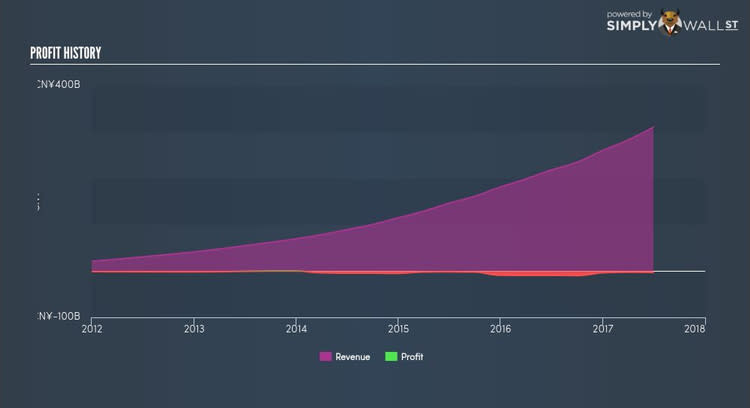How Does Investing In JDcom Inc (JD) Impact Your Portfolio?

For JDcom Inc’s (NASDAQ:JD) shareholders, and also potential investors in the stock, understanding how the stock’s risk and return characteristics can impact your portfolio is important. Generally, an investor should consider two types of risk that impact the market value of JD. The first type is company-specific risk, which can be diversified away by investing in other companies to reduce exposure to one particular stock. The second risk is market-wide, which arises from investing in the stock market. This risk reflects changes in economic and political factors that affects all stocks.
Not every stock is exposed to the same level of market risk. A popular measure of market risk for a stock is its beta, and the market as a whole represents a beta value of one. A stock with a beta greater than one is expected to exhibit higher volatility resulting from market-wide shocks compared to one with a beta below one.
See our latest analysis for JD
What is JD’s market risk?
JD.com has a beta of 1.48, which means that the percentage change in its stock value will be higher than the entire market in times of booms and busts. A high level of beta means investors face higher risk associated with potential gains and losses driven by market movements. Based on this beta value, JD will help diversify your portfolio, if it currently comprises of low-beta stocks. This will be beneficial for portfolio returns, in particular, when current market sentiment is positive.
Does JD's size and industry impact the expected beta?
A market capitalisation of USD $56.52B puts JD in the basket of established companies, which is not a guarantee of low relative risk, though they do tend to experience a lower level of relative risk compared to smaller entities. However, JD operates in the internet and direct marketing retail industry, which has commonly demonstrated strong reactions to market-wide shocks. Therefore, investors can expect a low beta associated with the size of JD, but a higher beta given the nature of the industry it operates in. This is an interesting conclusion, since its size suggests JD should be less volatile than it actually is. There may be a more fundamental driver which can explain this inconsistency, which we will examine below.
Is JD's cost structure indicative of a high beta?
An asset-heavy company tends to have a higher beta because the risk associated with running fixed assets during a downturn is highly expensive. I test JD’s ratio of fixed assets to total assets in order to determine how high the risk is associated with this type of constraint. Given that fixed assets make up less than a third of the company’s total assets, JD doesn’t rely heavily upon these expensive, inflexible assets to run its business during downturns. As a result, the company may be less volatile relative to broad market movements, compared to a company of similar size but higher proportion of fixed assets. However, this is the opposite to what JD’s actual beta value suggests, which is higher stock volatility relative to the market.
What this means for you:
Are you a shareholder? You could benefit from higher returns during times of economic growth by holding onto JD. Its low fixed cost also means that, in terms of operating leverage, it is relatively flexible during times of economic downturns. Consider the stock in terms of your other portfolio holdings, and whether it is worth investing more into JD.
Are you a potential investor? I recommend that you look into JD's fundamental factors such as its current valuation and financial health. Take into account your portfolio sensitivity to the market before you invest in the stock, as well as where we are in the current economic cycle. JD may be a great investment during times of economic growth.
Beta is one aspect of your portfolio construction to consider when holding or entering into a stock. But it is certainly not the only factor. Take a look at our most recent infographic report on JD.com for a more in-depth analysis of the stock to help you make a well-informed investment decision. But if you are not interested in JD.com anymore, you can use our free platform to see my list of over 50 other stocks with a high growth potential.
To help readers see pass the short term volatility of the financial market, we aim to bring you a long-term focused research analysis purely driven by fundamental data. Note that our analysis does not factor in the latest price sensitive company announcements.
The author is an independent contributor and at the time of publication had no position in the stocks mentioned.

